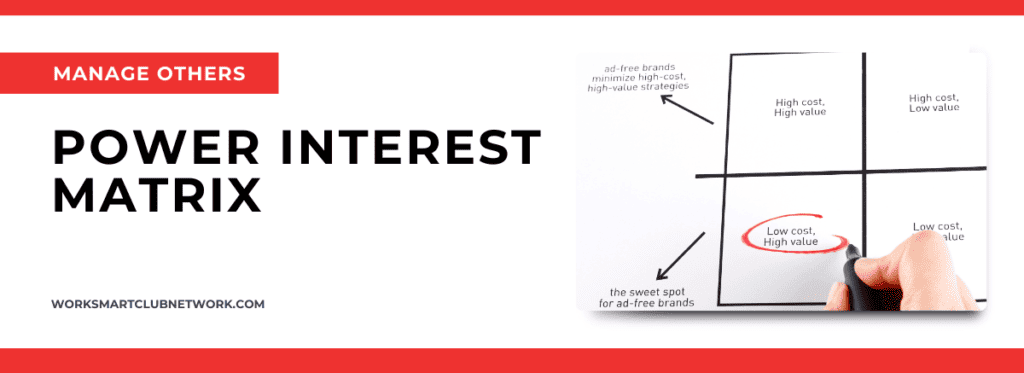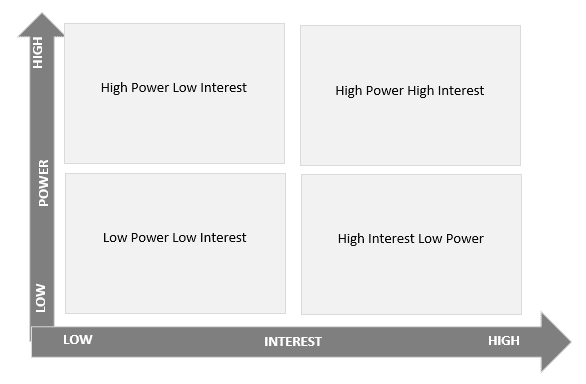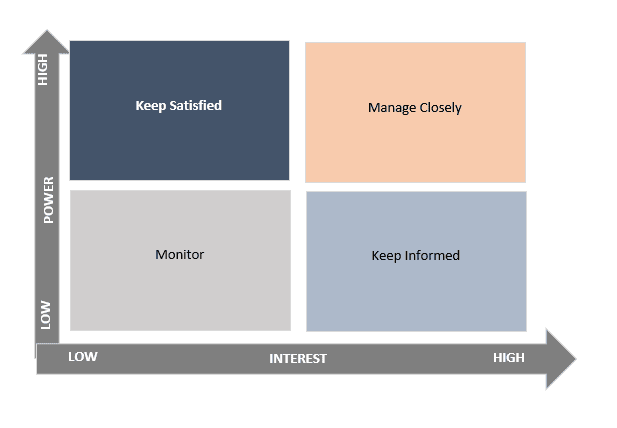
Power Interest Matrix
This post discusses the Power Interest Matrix to help you understand how to manage stakeholders.
There are no downloads in this post. Draw the quadrant on paper to set up your matrix and identify the quadrants where people need to go based on their influence and power.
Managing expectations is what every manager needs to know how to do, especially when addressing change and projects.
Let’s define a stakeholder. This is a person or entity who has some stake in the project. This may affect them directly or indirectly, or they may manage people who are involved or manage a part of the company. Whatever the case, they will be impacted by the project.
When you are putting together a charter for your project or mapping out your change, you will (or should be) define your stakeholders, those inside the company (internal) and those outside (external). And the communication flow with the person or entity is ideally mapped out during this process.
The Power Interest Matrix will help you formulate the communication plan. Let’s go through the steps of setting up a matrix.
1.) Create a list of your stakeholders.
2.) Evaluate them based on the high and low power and interest axes. Some people have high or low interest in your project, while others might have high or low power or influence.
3.) A facilitator can help keep people focused, objective, and out of politics. When people or entities have the power and influence over your project, emotions can run high.
4.) Once you put the stakeholders in these categories, you can begin to set up the strategy to manage expectations and communicate.

Stakeholders with a high power need to be managed closely and satisfied, while those with high-interest need to be kept informed. When a stakeholder has high interest and power, you will want to keep them informed and satisfied.
The diagram below shows the unique approach for each category of stakeholders.
High power – High interest:
This group of stakeholders is likely the decision-makers with the most significant impact on the project flow. It is essential to know what this group wants regarding communication, reports, and follow-up so you can provide that.
High power – Low Interest:
This group of stakeholders has high power but low interest, and therefore, they need to be monitored because they have influence that could shut everything down. Clarify their desire for information and communication provided in that format.
Low power – High interest:
This group of stakeholders may be helpful with the project because of their knowledge and or skills, but they lack decision-making. Keep them informed. Design the strategy in advance that will provide that information along with engagement so you can be notified of any issues.
Low power – low interest:
This group of stakeholders has low power and low interest and needs only the minimum communication. Monitor them throughout the project.

The Power Interest Matrix is an excellent tool for visualizing stakeholder expectations management.

